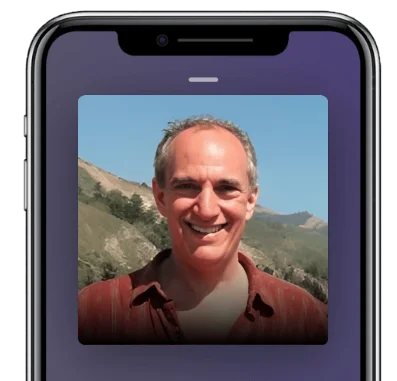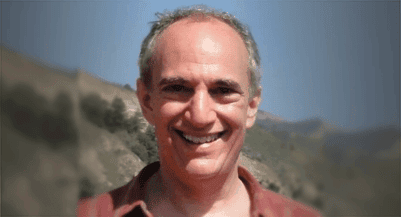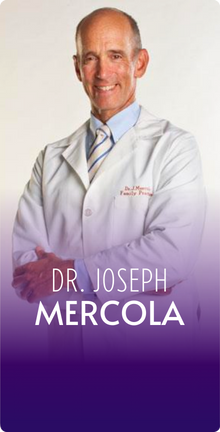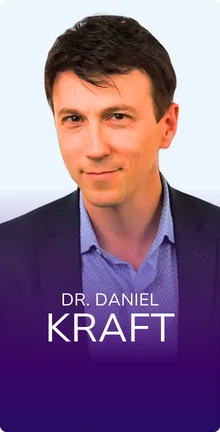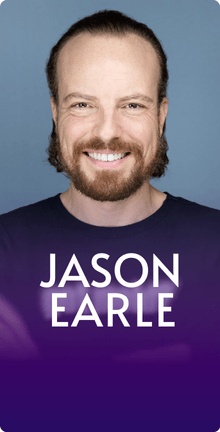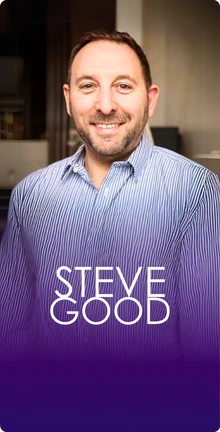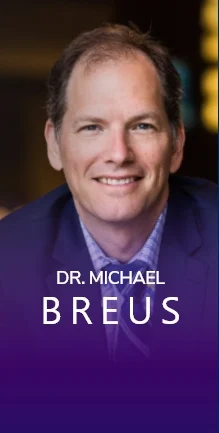In this Episode
- [00:39]Stephan introduces Lee Weinstein, an MIT graduate and professor, patent agent, and the inventor of Laser Tag. He runs a small medical device company that helps people eliminate TMJ.
- [05:00]Lee shares how he buys N95 or KN95 masks from retail outlets to test if it is fake or not.
- [12:11]Lee explains how wearing any type of mask is good enough to stop the outgoing, but for your protection, he recommends the best type of mask to wear.
- [17:29]Lee elaborates on why N95 masks were originally made for construction workers, carpenters, etc. who were in particular environments that could compromise their health when not wearing protective gear.
- [21:33]Lee talks about HEPA filters having almost 100% efficiency for big and small particles of virus.
- [27:09]What are the advantages of wearing face shields in public places?
- [35:47]How do ionizers like AirTamer work? Can it help protect you from the Coronavirus?
- [41:45]Lee explains the caution of using a UVC lamp and how it can kill retina cells and possibly give you eye cancer.
- [45:21]Lee and Stephan talk about the benefits of using SleepGuard, a tool for ending TMJ pain.
- [49:18]Visit SleepGuard’s website at mysleepguard.com to check out a solution for TMJ pain. You can also send a mask to Lee Weinstein to help him build his lists of who’s selling fake and real masks. Send us a message to get Lee’s address.
I’m just so excited to have you on the show today, Lee.
Thank you. I feel glad to be here. And I’m happy to talk about those things, but there’s something that I’d like to talk about first that I think might resonate with your people. And that is the most important and simple thing that you can do to stay safe from Coronavirus.
That would be great. Very timely and important, so please do.
The reason that’s important to me is I have three people in my life who would be very likely not to make it if they caught that disease. And so even though I would be likely to survive, if I caught it, I don’t want to catch it and give it to one of them. And it’s led me down some interesting paths. And one of the things I want to share with you today is I read all these articles about people testing different kinds of masks and stuff like that. And it was evident to me from the very beginning of the pandemic.
Remember when people were getting sick on the Diamond Princess? When it was moored its dock, people had been closed in their rooms for weeks, and they were still getting sick, new people were getting sick. And the only reason that I could see that that could happen is the way the air circulation system works on the ship. And that air was moving from one compartment to the next, and people were getting sick from that. So I started reading articles on particulates that come out of people’s mouths when they talk or whatever. And all the research had been done years ago, and all the numbers were out there. And so then when I was looking at masks, and I couldn’t get the data that I wanted off people who were testing it, I went out, and I bought this.
It’s a little $6,000 box that’s used primarily in clean rooms, in semiconductor facilities, but it counts particles. It classifies them into .3 micron size, .5 micron size, 1-micron size, 2.5, 5, and 10. And the smallest .3 is the class that the coronavirus particle would be in. And that’s the filtration, that’s the number for which people want to know, the filtration efficiency of masks. So I made myself a little adapter, which I’ll show you here, which can get clamped onto a mask, and then this goes to the particle counter. This gets clamped with a clamp so that I know that I’m drawing air only through the mask, and nothing is leaking around it. And then I tested all kinds of stuff. And then I did another set of tests which I’m not done with yet, which is using mannequin heads, figuring out given a certain kind of mask, how much air is going through it and how much is going around it because it doesn’t seal well to your face. Because those numbers matter, too.
Be more thorough in researching before you make a decision. Not everything that’s out there is true. Share on XIn the end, I’ll tell you the result is there’s nothing close to an N95 mask if it keeps you hundreds of times as safe as any of the other kinds of designs that are out there. So then I went out, and I started buying from different retail outlets and commercial safety outlets and stuff. Masks that were supposed to be N95 or KN95, which is the Chinese equivalent and testing them. And I found that 30% of them are fake. So I tested one from Staples. It was the main one that Staples was selling that was supposed to be KN95. And those N95 and KN95. The 95 in them means that it supposedly filters out 95% or more of those .3μm particles, which are the hardest ones to filter out. And I found that the masks that Staples was selling were only filtering out about 30%, which is about the same as two layers of a cotton t-shirt. And so I contacted their chief counsel, and I sent them a lab report, and they did not take the things off the market.
It’s kind of sad to me that there isn’t more being published on this in the mainstream press. I contacted the Washington Post. I had a whole article that I thought they could publish on fake masks and stuff like that. And what they told me was, “Well, unless you find a mask that’s on the FDA’s emergency use authorization list, and you find that mask being faked, we’re not going to publish it.” And I said, “Wait a minute, the public isn’t going out and checking that list, right? The public is going to stores, and they’re buying something that says N95, that says KN95.” It’s the public that I’m trying to protect. The hospitals, which are going to look at that list, can afford to have a lab at MIT or some other place like that, test these things for them. And they do. When that planeload of N95 masks got flown to Massachusetts on the crafts’ plane, they sent a box of them over to MIT to have them tested there to make sure they were good enough to use at Mass General Hospital. And they were, and so then the FDA gave the emergency use authorization, and everything went through.
So anyway, one thing that people might want to know is that I have not yet found any 3M product being faked. And the 3M KN95 and N95 masks are fantastically good. They’re supposed to filter out 95% particles, but they filter out about 99.9% of particles. They’re like 100 times better than they need to be. And they’re now available in a lot of places too. So I don’t know if Amazon has any 3M’s on them, but places like discountsafetygear.com have 3M back in stock now. So for people who care, that’s the thing to keep you safe. You can go to as many dangerous biker parties and drinking events and whatever, and it can be Coronavirus in the air all around you. If you’re wearing that thing, you’re okay.
The 3M KN95 and N95 masks are fantastically good. They’re supposed to filter out 95% particles, but they filter out about 99.9% of particles.
Yeah, as long as you wear it correctly, though, if you wear it wrong, you don’t have a good seal, then you’ll just be drawing the Coronavirus air right into your lungs.
Very true. And the key thing is the nose bridge shaper. You want to bend that thing, it’s usually a piece of aluminum on the cheap things, it’s a little steel wire, but on N95 and KN95 masks, it’s usually a strip of aluminum. If you take a deep breath, and you breathe out quickly, and you don’t feel any air going anywhere on your skin, you’re good.
Yeah, I recommend people who are serious about this watch a video showing the correct placement and just kind of how to wear it, how to put it on, how to take it off. It’s a very deliberate way that you put it on and take it off. For somebody who’s used to just wearing a surgical mask, what do you tell that person because the N95 mask is maybe awkward, difficult to wear, or they don’t breathe as well with it, or as easily, maybe it feels too hot?
So I have a surgical mask here. And if I put this thing on, and then I shape it to my nose, when I breathe through this thing, a large percentage of my breath winds up coming out backward here at the edges. So no matter how well you seal this to your face, you’re mostly not breathing through it. And I don’t think people realize that if you take this thing and you seal it to your lips and try and breathe through it, you’ll feel like you’re as fixated, you can hardly get any air to move through this thing. And it’s a very good filter, and it’s about 85% efficient at pulling out Coronavirus particles but most of the air that you’re breathing when you wear one of these things is not going through it. And the reason that it’s not difficult to breathe this on is because the air isn’t going through it.
In terms of it preventing outgoing particles, it’s probably still pretty good because when the respiratory droplets come out of your throat, as you’re breathing, they’re usually somewhere between two and five microns in diameter, which is 20 to 50 times the diameter of a Coronavirus particle. And maybe in one of those droplets, there is a Coronavirus particle, occasionally there would be. And that’s why it’s dangerous to be around somebody who’s talking or singing, especially singing, who’s got Coronavirus, and they may not even know it. And the level of Coronavirus in somebody’s lungs and saliva goes as high as 100 million particles per cubic centimeter. It’s not that unusual that one of these tiny little particles would have a Coronavirus particle in it for somebody who’s sick at that level. Well, when you’re breathing out a particle as big as 2-5μm is very easy to catch, whether it’s in a cotton mask, or whether it just bumps into the surface of this thing and sticks.
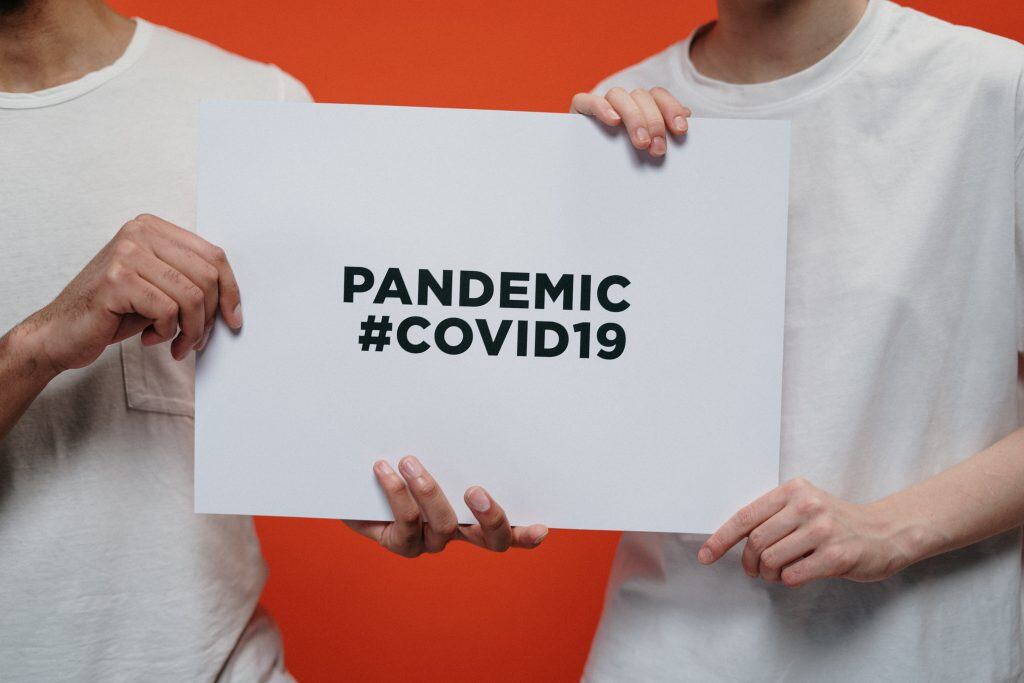
Remember it’s liquid now. So if it does touch a surface, like the inner surface of this, it won’t bounce off, like a piece of dust mite, it’ll stick. So any mask is pretty good at stopping the outgoing, but if you’re trying to protect yourself, or if you’re going into an environment where some people are not wearing masks, or if you’re going out. Let’s suppose you live in a state where the bars don’t need to be closed right now. And on and off, that’s changing in different states. I don’t know whether it’s currently legal or illegal for bars to be open, for instance, in Texas, because it’s been changing a lot. But suppose you want to go out drinking with your friends and suppose you wanted to stay safe. If you wear an N95 mask, then there could be tons of Coronavirus in the bar where you’re at. Where everybody’s yelling loud, and so there are lots of particles coming out of people’s mouths. And if the only time you don’t have your mask on is when you take a sip of your drink, you lift your mask, and you take a sip of your drink or whatever and then you put it back, your chance of catching coronavirus is about zero. Because you’re doing a really good simple protocol.
Now, if you’re worried about looking like a dork, okay, well, you can trade off your concerns of looking like a dork versus your concerns of staying alive, or your concerns of your friends staying alive, that’s up to you. But the point is that you can work even in a really dangerous environment like that with an N95 mask on, you can stay safe. But with wearing a mask like this, if everybody else is wearing a mask, then yes, it will catch the particles on the way out. But if there are some people not wearing masks, and they’re sick, this thing is not going to protect you from catching the virus because when you’re breathing in, at that point, that 2-5 μm droplet of water has evaporated. It evaporates by the time the particle travels a few inches away from your face. It evaporates fast. If you want to see how fast it evaporates, do you ever watch one of those ultrasonic humidifiers, the cool mist humidifiers, where the mist comes out of the thing? The mist makes it about this far before it disappears into the air. And those are the same size droplets caused by the same physics effect as when you breathe. It’s millions of times as many of them coming out of one of these humidifiers so that you can see them. But when somebody is singing, yelling, talking whatever those particles are liquid for about this far away from your face.
About afoot.
The N95 protects the people around you more than the surgical mask does.
Yeah, or less. And then they’re down to whatever was dissolved in that droplet, which is, let’s say the Coronavirus particle, which is much smaller. Well, maybe enough of that, unless you think there’s something else that people would want to know.
So I have a couple of quick questions about this. I’ve heard that N95 and KN95 masks don’t protect the people that are around you like a surgical mask does because there’s a vent that has no outgoing filter. So your exhalation just goes straight into the environment.
Yeah, that’s a pretty serious misunderstanding, although the theory behind it is right. So let’s suppose we take a mask, I’m going to show you the best N95 mask on the market, it’s these that used to be sold for contractors, this is a 3M mask, and it has the valve that you’re talking about. But when I seal it to my face, the valve does take some of the outflows, but it doesn’t take the majority of it. It takes a little bit of pressure to open the valve. And at that pressure level, about 25% of the air is going out of the valve and about 75% is going through the filter material. And whereas if you look at one of these surgical masks when it’s on your face, I haven’t measured it yet, but I’ve estimated it. It’s probably even worse than I think that more than 50% of the air, when you breathe out, just gets diverted and goes backward.
So the N95 protects the people around you more than the surgical mask does. And you’re right. If it has a vent in it, it doesn’t protect people perfectly. But there are plenty of N95 masks that don’t have a vent. And those are pretty much close to 100% filtration in both directions. So that would be the best thing if you want to protect everybody else. But the other thing you can do is you can take a regular N95 mask that has a vent, and if you want to be good to everyone else and awesome to yourself, then you can take and glue a little square of cotton over the vent on the inside. And now you’ll get full filtration of the large particles coming out of your mouth before the air goes out the vent.
Got it.
And then you’ll have the best of both worlds. You’ll have the cooler operation, lower breath out pressure, which is what those vents were designed to provide. Those vented masks were originally made for people who are working in the trades, not for like hospital operating rooms, and by far, the largest quantity of N95 masks before the pandemic was not going to medical people. This statement that you see commonly in the press, “N95 masks are for health care workers.” No, N95 masks were mostly for carpenters, machinists, people working around asbestos, stuff like that, who were in particular environments that would compromise their health if they weren’t wearing a good mask.
For most people, the chances of surviving COVID-19 are high, and that’s good news. However, the chances of passing it to others are also increased, and that’s why we still need to be extra careful. Share on XYeah, construction workers.
Yeah, it’s relatively rare that a surgeon would have been wearing an N95 mask; they usually wear one of those surgical masks. The only time somebody in a medical situation would have been wearing an N95 mask would be if they knew they were going into work in an area where there was Ebola or something like that, then yeah, definitely, they would be. But it wasn’t common equipment that people would use in hospitals; you would have never seen one around two years ago. They were there for when they were needed, but they weren’t commonly used. So those vents were put in because when you’re a tradesperson, and you’re on a job site, and you’re carrying lumber, and you’re sawing wood, or you’re doing whatever, you’re working up a sweat, you’re breathing much harder than a surgeon is breathing while he’s doing his little thing doing an operation. So those vents were to help the fibers of the mask not get saturated with water from people breathing out, which makes it even harder to breathe and to just make the whole breathing process a little easier. And they do. You said you had other questions, too?
Yeah. That was great. So you see a lot of misinformation on Facebook about mask-wearing, about whether it works. It has become very political, which is just bizarre to me. But one of the statements that you see circulating on Facebook is that older people will die from asphyxiation or having poor breathing, their breathing is compromised by wearing a mask all day long. What do you say to that?
First of all, I don’t think it’s anywhere close to true. I mean, I’ve worn an N95 mask for 8-10 hours in a row a couple of times when I was out doing stuff in public where I didn’t want to be putting it on and taking it off, it’s just easier to leave it on. And after a few minutes, I don’t even notice that I have the thing on. And it’s a little bit different, how to breathe through it, but not a lot. I mean, they’re designed to be very good. The ones that are hard to breathe through, if you buy one of these masks that get fitted with a PM2.5 filter, I think I’ve got some of them here somewhere, but I don’t see them right now. It’s one of those masks where there’s an insert pouch, and you put a filter in there. A PM2.5 filter is a fibrous filter that’s meant to catch particles down to 2.5μm. But it’s an ordinary filter, meaning it’s just fibers.
A HEPA filter is 100% efficient for big particles, and for tiny particles, it’s close to 100% efficient because they always get attracted over to fiber and stick.
An N95 mask or KN95 mask is not an ordinary filter. For down to a few microns, it catches particles like a screen where there are holes through the filter, and if the particle is bigger than that hole, it can’t make it through the hole. That’s the way I think most people think that filters work. And before I learned what type of filter was, that’s the way I thought all filters worked. HEPA filter, which stands for high-efficiency particulate arresting filter, works for big particles, it catches them because they won’t fit through the holes. But for small particles, let’s say there’s a fiber and it’s maybe as big around as this peanut jar, and there’s this particle that’s going to come near it. But the fiber itself is charged; it has electric charges embedded in it. And when this particle starts to come near it and is going to go past it, it gets pulled over to the fiber, and it sticks. Even though the hole here is really big, compared to that tiny particle, it doesn’t go through the hall because it sticks. The way you could think of it is it’s like if I put up a matrix of metal rods, and I tried to throw a magnet through the holes, it would be able to because as the magnet gets near the rods, it gets pulled over to one of the rods and it sticks. Well, that’s a magnetic force, but with an electric force, it’s the same with a particle.
So these particles come into the HEPA filter. And even though the HEPA filter has space to allow them through, the fact that the fibers of the HEPA filter are highly charged, they pull the particle over, and it sticks. So the amazing thing about a HEPA filter is it’s 100% efficient for big particles they can’t fit through, and for really, really tiny particles, it’s close to 100% efficient because they almost always get attracted over to fiber and stick. And for an in-between size of a particle, it has a minimum point in its efficiency. And that minimum point is .3μm, which is why this thing has a counter bid for .3μm is because that’s the hardest size to pull out a Coronavirus size particle, 1μm is much easier for the HEPA filter to grab than a .3μm.
So when this counter says that an N95 mask is 99.92% efficient, for a Coronavirus particle, it’s more like 99.95% efficient, because those are smaller. And fortunately for things like asbestos particles that are a hundredth of a micron or something like that. An N95 mask or a KN95 mask because it’s a charged matrix filter, that’s a different kind of filter than just a fabric filter. They’re almost 100% efficient as you get down to the tiny things, which are the ones that can go right through the walls of your lungs and straight into your bloodstream. So if you’re out in a city that’s got really bad pollution, like Mexico City or something like that, and you wear an N95 mask, you’re gonna be a hundred times as healthy as if you’re just breathing in the junk.
Yeah. You don’t need to wear a mask if there’s nobody near you, right?
Coronavirus point of view, yes. However, there were some interesting studies done. So like for bicyclists, like my buddy Phil rides in all these bicycling events. Here in Massachusetts, we have a giant cancer research fundraiser every summer called the Pan-Mass Challenge that raises about $50 million a year for cancer research. And it’s thousands of men and women riding a 200-mile course for two days from like central Massachusetts, all the way out to the end of Cape Cod. And then there’s a big party at the end, and I usually volunteer at the party. So I’m all about the party, and I’ve never ridden the race. But so they were looking at whether to hold the Pan-Mass Challenge this summer, and there were two main issues. One was will the cyclists be safe while they were cycling. And two was could they hold the party at the end. And it turned out that the party at the end was safer than cycling.
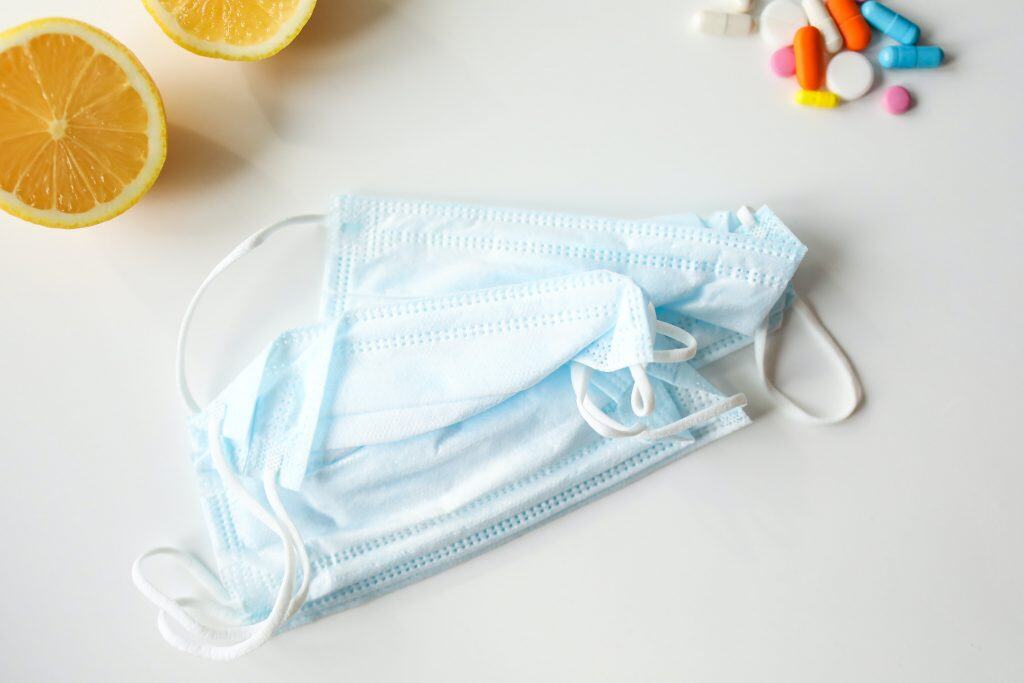
Even though the cyclists were pretty far apart when you’re cycling, you have a slipstream of air, right? And it’s going back to the person that’s behind you, is moving right through the air that you just breathe out. And it hasn’t had time to spread out or go anywhere. So there was this group, I think, at Oxford in England that did a computer simulation of people cycling at different speeds and breathing and the particle counts and stuff like that. And it turned out to be not in the least bit safe. So whereas if you’re hiking with somebody and you’re next to them, and there’s breeze blowing and all that kind of stuff, there’s a long time between when a particle comes out of someone’s mouth and when you would breathe it in. And it’s dispersed by that. But if you’re cycling in a pack, not so. So it depends on the activity.
Got it. Okay. A few more quick questions on this, and then we’ll move on. Face shields, any value to having that on? I’ve seen dentists or dental technicians wearing a mask, and then a face shield on top of that. Is that extra valuable or extra safe?
Well, the explanation is that somebody could cough or sneeze on them. And if that happens, you get this momentary burst of a huge amount of projectile stuff that could potentially have a virus in it. So if I was a medical worker working close to someone’s face, I would wear a face shield. And it’s not because it’s useful 99.9% of the time, it’s because, in that very rare case, where like you’re a dentist, you’re leaning over somebody and they cough. You don’t have a face shield on, and you’re thousands of times less safe because those projectile particles can go right into your eyes. If you look at what the air does, like if I’m walking through a supermarket and let’s suppose there are Coronavirus particles in the air in the supermarket–there probably are but not very many.
One of my friends asked me near the beginning of the pandemic, “Do I need to wear a face shield when I go to the supermarket as well as a mask?” And I thought, how do I calculate this? What’s the right way to look at it? I said, Oh, okay. Have you ever seen somebody take a drag on a cigarette and then breathe out? So those cigarette smoke particles are about .2-1 micron-sized particles, they’re in this range of size. When somebody takes a drag on a cigarette, and they breathe out, lots of smoke comes out of their mouth. Well, why didn’t it all stay in their lungs? And the answer is, you breathe in, let’s say that here’s this little alveoli sac, and some air comes in here, and some oxygen atoms diffuse into the walls of this thing and go into your bloodstream, and then the sac contracts, and it pushes most of that air back out. Well, most of the particles were just staying suspended in that little volume. So something like between 10% and 50% of the smoke particles stays in your lungs, and the rest come back out.
Coronavirus particle landing in your lungs is very high compared to the chance of one landing on your eye.
Well, same when you breathe an air that has coronavirus particles, most of them don’t land, most of them come back out. But maybe 10% of the land in your lungs. So when you’re looking at the face shield issue, most of the surface area of your lungs is, I think, about five square meters. It’s big. So it’s all wrinkled up in there, but it’s big. And so you’ve got air drifting by this five square meter thing. And maybe 10% of the time, one of the particles sticks. Well, your eyes are only like a square centimeter. So that’s a tiny fraction of the five square meters. So as you’re walking around in the store, the chance of a Coronavirus particle landing in your lungs is very high compared to the chance of one landing on your eye. And even if you’re wearing an N95 mask where you’ve reduced the chance of one landing in your lungs by somewhere between, let’s say a factor of 100 and a factor of 1000.
Even then, the chance is still higher than one will land in your lungs, and it will land in your eye. But if somebody coughs in your face, that completely reverses. Because the particles that they cough in your face act like little bullets, they won’t come at you and then go around your eye. The way that airflow would if you’re walking through a supermarket, they’ll just from their momentum go right into your eye. So the probability if somebody coughs in your face and they have Coronavirus, the probability that you will get Coronavirus is almost 100% if any of those particles land in your eye. So, in that case, a face shield is a very good idea. But if someone is not going to get a chance to cough in your face, so you’re not going to get any chance of these large projectile particles hitting you, then the facial shield is pointless.
Got it. Okay. Interesting. So this brings up a question around viral load because if someone coughs right in your face, and they’re very sick, and they have lots of the virus, that doesn’t bode well for you. Whereas if they’re asymptomatic, they don’t have much viral load themselves and then they don’t cough out a lot of viruses, and you’re just walking through it in the supermarket, the viral load, the exposure will be quite low, and the likelihood of you getting quite sick from it will be lower is my understanding. Is that correct?
An N95 mask keeps you a hundred times safer than any other type of mask out there. Share on XYes. And there are two issues. Just to get the terminology so that we’re using the same words for things. Viral load is the concentration in the person’s body who has the virus, and the viral dose is the amount that they hit you with at the initial thing.
Yep, good distinction.
There is an interesting correlation. It was in a New York Times article although it is known for other Coronaviruses other than SARS-CoV-2, it’s known that the higher the dose you initially get, the worse your symptoms will be. Because the exponential rise in your body will start at a higher point, and so the first couple days of that rise where your immune system usually has a chance to balance out and get on track, and it suddenly gets a big step function increase, and it and it overshoots. And so your chance of getting a cytokine storm where your immune system eats you alive is much higher if you get a higher initial dose that’s known for other viruses. Now, nobody’s ever wanted to experiment with SARS-CoV-2 because too many people would die during the experiment. But I think it’s safe to assume that the higher viral dose initially leads to a higher chance of death.
Now, there’s a bunch of articles that have been published about couples, where one couple, let’s say, worked in a hospital or worked as a sanitation worker or some job that put them at risk, and they got sick, and then their spouse got sick, and their spouse died, but they didn’t die. So the way I think about that is that probably what happens there is somebody gets sick, in their work environment, their viral load is building up. And maybe I don’t know how often the average couple kisses each other, but if you’re working long shifts and stuff at a hospital, it wouldn’t be unusual to go a couple of days without kissing your partner. Well, if you’re building up that load in your body, you get a low initial dose, but you build up to a higher load. And then you finally have some time to spend with your partner, and you kiss, the initial dose you give them might be 1000 times as high as the initial dose you got. So you don’t even know you have it yet, and it’s not at a terrible level in you yet, but it’s at a high enough level that when you give it to them, their immune system doesn’t have time to figure it out before it gets to such a level in them that it kills them.
It’s safe to assume that the higher viral dose initially leads to a higher chance of death.
So I wrote a little paper on that, I put it online for my friends. And the way I coined this little thing like you could say it to your partners, “let’s make out, so we don’t kill each other.” Like there’s a double meaning to that, so I kind of liked it. But if you’re in a partnership where one of you has a chance of being exposed regularly, like my friend, Harry, his wife, Kathy, right now, she’s working on a public school system. And so every day, she’s got a much higher risk than he does. And I told him, you guys should kiss every time she comes home because if you are both going to get it, you want to both get it at the same level, you don’t want one of you to accidentally transmit it at an initially much higher dose.
Makes sense. Okay, another question that comes to my mind around devices that protect you. There are these negative ion kind of ionizers that you wear around your neck, and it’s like a personal air purifier, AirTamer is an example of that. People on airplanes will wear it, and it doesn’t make any noise, it doesn’t have a fan or motor in it–I don’t think, but it just ionizes the air around you and forces the particles away so that it helps keep you from getting sick. What’s your take on that?
Well, ionizing air doesn’t actually “force” particles away. There is a kind of filter system like if you go back before smoking was banned in most restaurants and bars and stuff. If you went into a bar, you would see one of these smoke eater machines on the ceiling. And what it is, is as the air gets drawn into it, there are these high voltage wires, maybe centimeter apart, maybe a stack of them, a foot or taller. And as the air passes by those high voltage wires, it gets ionized, just like you just said, for these little personal purifier ones. And what that does is very quickly, like every dust particle, smoke particle, anything that goes in there gets charged. And then, after it goes past the wires, it goes between a set of metal plates. There’s this sandwich of maybe 20 parallel metal plates. Like if you look at the back of an air conditioner, where the heat exchanger is, or you look at the front of an air conditioner, slot of parallel metal plates. Well, these are further apart, and the wire sits right in between them. So the wire ionizes air and transfers charge to particles. And then the particles are moving in, and they get attracted over to the metal. And they stick, and they just stay there. If you want one of those things in a smoky room for 100 hours, and then you pull the metal plates out. They’re all covered with this tarry, gunky substance, and you can wash them in the dishwasher. And that’s all the smoke particles that they pulled out of the air.
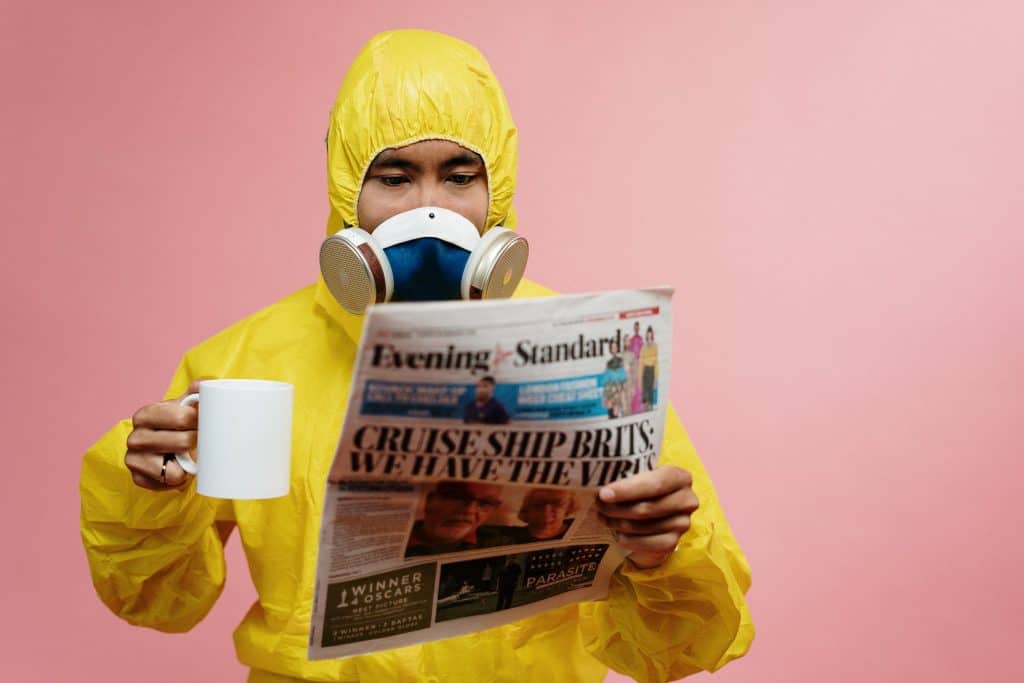
So my question with the personal ionizers, I don’t know the answer to your question, is after you charge the particles, does that make them any less likely to wind up in you? And I’m not sure that the answer is yes because there’s no obvious place that they’re getting attracted to like metal plates, those metal plates are a very necessary part of that equation. Now, if somebody made an air purifier, that was an air ionizer, and then a bunch of thin metal plates that were all built into a mask, that would work, but it would be bulky, and it’d be a pain in the butt. But if you’re just wearing this thing around your neck, and it’s just ionizing air that’s near you, it’s not obvious to me that should be a win. There’s nothing that’s going to push the particles away from you any more than anything that’s going to attract them to you because you don’t know what your charge is versus the particles. Now, if the necklace that you’re wearing, if it’s connected to your skin, and I guess maybe it has to be, so that’s one end of the circuit, and then it’s spewing things off. So actually, no, it would go the other way, the particles would be attracted to you. Because the way that the ionizer is creating the ions is it’s transferring electrons from somewhere out into the air. Well, where’s it getting the electrons? Well, you’re the one wearing it, so it’s getting the electrons from you. So what it’s doing is it’s positively charging you.
Well, it doesn’t charge from your skin, because you’re not wearing it on the surface of your skin. You’re wearing it like halfway down in your chest, over your clothes.
Well, somewhere somehow, if it’s doing what it says it’s doing, which is if it’s ionizing the air, it’s either ionizing it in both directions, so it’s creating positive and negative ions, and then they can just recombine so there isn’t much point, or it has a ground reference to your body somehow. In which case, it can create purely negative ions out there or purely positive ions and charge you the opposite way. One way or another, those islands have to bounce. So if it’s creating both in the air, that’s pretty useless, because they’re just going to recombine. If it’s only creating one, like negative ions, like these ionizers that you’ll see in your home, that’s useful because they won’t recombine to something.
Be careful with UV cleaners. Although they can thoroughly sanitize areas, extreme exposure to UV rays may affect health.
But then the question is, what’s the other side of that circuit for the home ones? It’s the wall plug. It’s the ground and your wall plug. So for the home ones that are creating negative ions, it’s pumping a positive charge into the ground of your wall plug. And if it’s a wearable one, and it works, and it is creating negative ions, it has to be pumping a positive charge into you. Now, that’s not that hard to do. You could even do it through your clothing. It’s not to be that impossible to do. But provided it is doing that, then you’re positively charged, and the air is negatively charged, and now those particles are attracted to you, not repelled away. And I haven’t measured one, so I don’t know which of those it’s doing, but it has to be one of those two.
Okay, I’d be interested to hear once you’ve had a look at something like the AirTamer of what you see as the value or lack thereof of it.
And one more thing I want to cover just quickly, and that’s ultraviolet. So there’s a lot of UV lamps out there, and people are saying, “Oh buy this UVC lamp because UVC kills Coronavirus.” Well, UVC also kills all the cells in your retina. So UVC is the thing that would give you eye cancer if you were looking at the sun. However, there’s only a very small amount of UVC coming from the sun because it doesn’t make it through the atmosphere. But anyway, UVC lamps are out there, and they have the potential to be extremely dangerous. Like if you look at the professional ones, and you look at the warning sheets that come with them, one of them that I bought. I built a UV sterilizer from some of my products because I make medical products. And now, in the time of Coronavirus, I ultraviolet sterilize everything before I ship it. Well, on the lamp, it says, “Caution, looking at this lamp for one second can cause you eye cancer within a year.” So just a caution for people.
Yeah. That’s scary. Okay, so let’s talk a bit about some of the medical products, including the SleepGuard. What’s the science behind it? Why does it work? Why do people need it? The SleepGuard in particular, which is how I found out about you was when I was researching an article I wrote for lifehack.org about sleep technologies. And yours was one of the cool ones because I grind at nights and clench at night. And especially since I’ve been wearing a retainer since I had about a decade ago.
If there’s a brand you want to trust when it comes to high-quality masks, it’s definitely gotta be 3M. Share on XWhen somebody clenches at night, they do it because it gives a soothing feeling. And your mind will just happen upon it, and for some people, it becomes very addictive. And some people have much more regular ten streams than others. So if you look at somebody who has a background of trauma, especially childhood trauma, or if you look at somebody who’s been through a recent physical or mental trauma. It could be that they got divorced, it could be that they had a skiing accident, it could be that they went through surgery, but something where they were helpless in one way or another will say that is central to trauma. And that shows up in their dreams.
So clenching brings a kind of a soothing feeling during sleep that’s similar to the soothing feeling I guess kids get from sucking their thumb. And to your subconscious, it seems like it’s helping you because it’s giving that soothing feeling when you’re having that troubling dream. It doesn’t know that when you wake up in the morning, you’re going to be in pain. And so it only senses the instantaneous. And the second unfortunate thing of nature that has people clench is that when you’re asleep, the neurotransmitter balance in your brain changes. And something that would have been painful in your mouth, like people who clench a lot, they might even have a hard time chewing when they’re awake because their teeth hurt. But that pain when they bite doesn’t exist when they’re asleep. Those pain transmitters don’t work when they’re asleep. So nature is hiding the pain and giving you a soothing feeling when you clench when you’re asleep. And that’s like the killer combination. So that’s what builds up the habit.
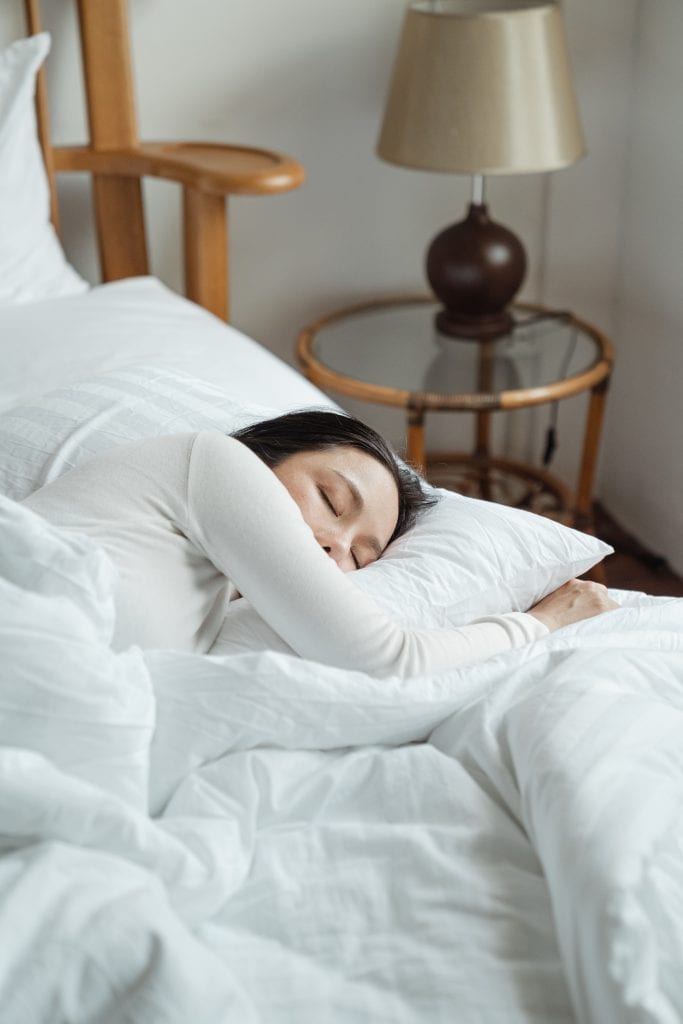
So the idea behind the SleepGuard headband, which I hadn’t forethought, was to have one sitting here on my desk with the actual electronic module on it, but I do have one of the cloth pieces. So this headband here is what the module would be mounted here in the center in the front electronic module. And it picks up signals from your muscles here at your temporalis muscles. So if I’m sitting here and I put my fingers against my temples, and I bite, I’ll feel muscle fibers move under the skin. So all that the biofeedback headband is doing is it sensing the electrical signals from these muscles that tell it that you’re clenching. And then it makes a quiet beeping sound, not to startle you, it starts very quietly. And the whole point of it is for you to be able to create a different part of your subconscious, that hears that sound as a signal that you’re hurting yourself. And that you train that part of your subconscious that every time it hears that sound, even though this other part of the subconscious says, we’re doing a great job keeping you on tense by giving you the soothing feeling and having a clench.
This other part of your subconscious will say, but I hear that sound and that means that I’m going to hurt when I wake up in the morning, that means that my teeth are going to crack or I’m going to need root canals, or I’m going to get a migraine or all these different things that happen from clenching. So if you stick with the process, and it isn’t trivial for most people, there are occasional people for whom it seems to be trivial, they’re very lucky. But for 75% of the people for whom it works, it isn’t trivial, you stick with the process, and you build up that second part of the subconscious for several weeks, then it will start to take over. And it will say no, find another way to let go with a dream, or dream a different dream, and there’s got to be another way to soothe yourself in this miserable dream and have this clenching. And so in that way, it’s attacking the root of the problem, rather than just treating a symptom.
Like, if you put a mouthguard in, yeah, that will keep you from breaking your teeth, but it doesn’t stop the clenching. And most people clench even more on a mouthguard. So if a migraine is your main TMJ problem, the mouth guard will make them worse. Or if cracked teeth were your only TMJ problem, the mouth guard might be a good solution for you. If pain in your muscles is your main TMJ problem, the mouth guards gonna make it worse. So it depends on what your particular symptom was in clenching or how that’s causing more damage for you whether you would want to choose to do the biofeedback. But the nice thing is, it’s going after the root of the problem instead of all the symptoms.
Do you have to wear this your entire life, or is it just a period of time, and then you can stop?
Most people, if they stick with it long enough, most people can completely train themselves out of the habit, so they don’t need to wear it anymore.
So long enough is what? Is that a year, two years?
Three or four months, usually.
Okay.
The fastest I’ve ever seen anyone do it was within a month. And I’ve seen people take half a year when they stick with it. But if you only wear it when you’re hurting, which is what most people do, so they wear it for a couple of weeks, and says, “Wow, my pain is gone. I’m not getting migraines anymore, everything is good. I’m going to stick this thing in a drawer because it’s in my head every night.” So then, in another couple of weeks, their habit comes back, and they wear it again for a while.
Surgical masks have excellent filters. They’re known to be 85% effective in blocking out the Coronavirus particles. Share on XRight. So it doesn’t fix it.
If you do it symptomatically that way, you’ll be out of it forever, and it takes a different level of discipline to do it for six months when you haven’t had any pain for four of those months.
Interesting. So, where do you get?
Mysleepguard.com is the website for the biofeedback headband.
Okay, mysleepguard.com. And what about all your other stuff?
The old website address still works, also at stopgrinding.com, that’s easier for some people to remember.
Okay. And where should we send our listeners who want to follow you, read some of your papers and articles, and so forth, where can we send them?
Well, if anybody has any questions for me, and they go to mysleepguard.com, there’s a little message box; Ask a Question box on every page of the website. You could just contact me that way, and then I’ll email back to you. And I also want to say I don’t know how big your audience is, if anybody wants to send me a mask to test, for the next couple of weeks, I will at no charge test any mask that somebody sends me along with an email address, I’ll email you back the results.
That’s very generous of you.
And I’m curious how many I’m going to get. But I’ll put up with it for a couple of weeks. And the other thing is if you want the mask back, then send me an envelope that’s already got the postage on it, or you can PayPal me five bucks, and I’ll mail that mask back to you. But most of the masks cost less than that. So they’re probably perfectly willing to have me chuck it. But I want people to be safe. And I also want to figure out who’s selling the fake masks. So when you send me a mask, tell me in a note where you bought it. All right. And then what I’ll do is, I’ll build up a website, which I’ve started now, but I haven’t put it online, that’s going to have a list of who’s selling fake stuff and who’s selling real stuff.
Awesome. Well, thank you so much, Lee. It was a real pleasure. And thank you, listeners. Now, get out there and help make this world a safer place.

